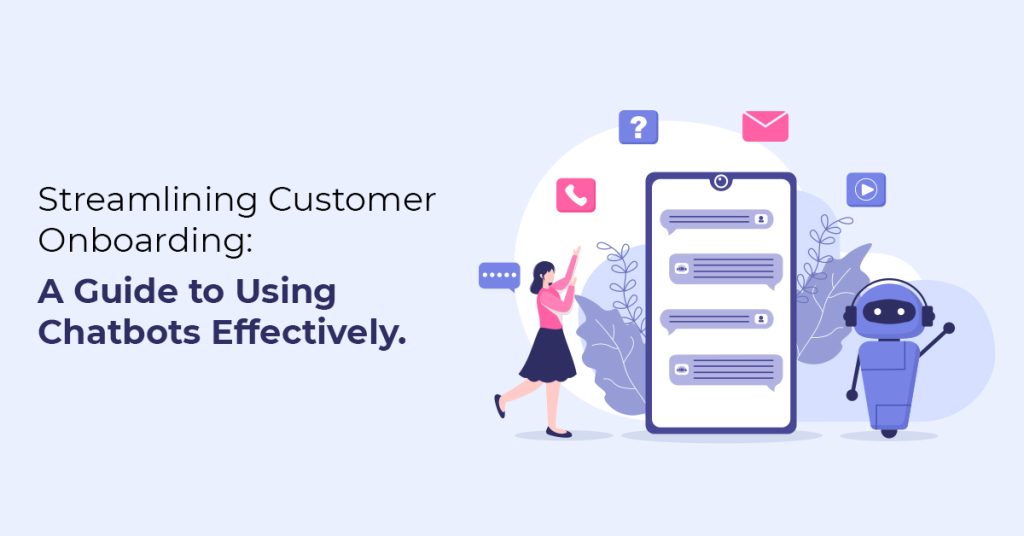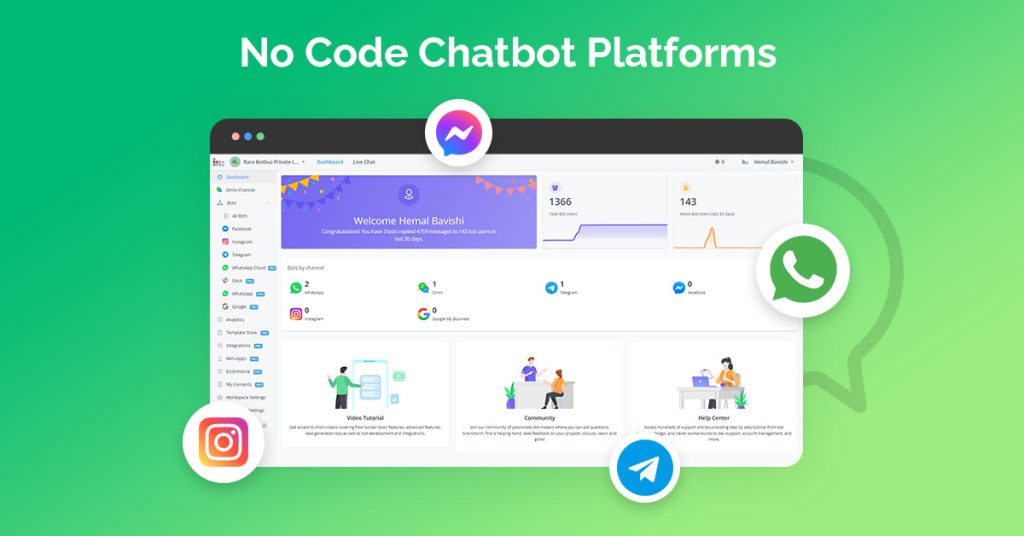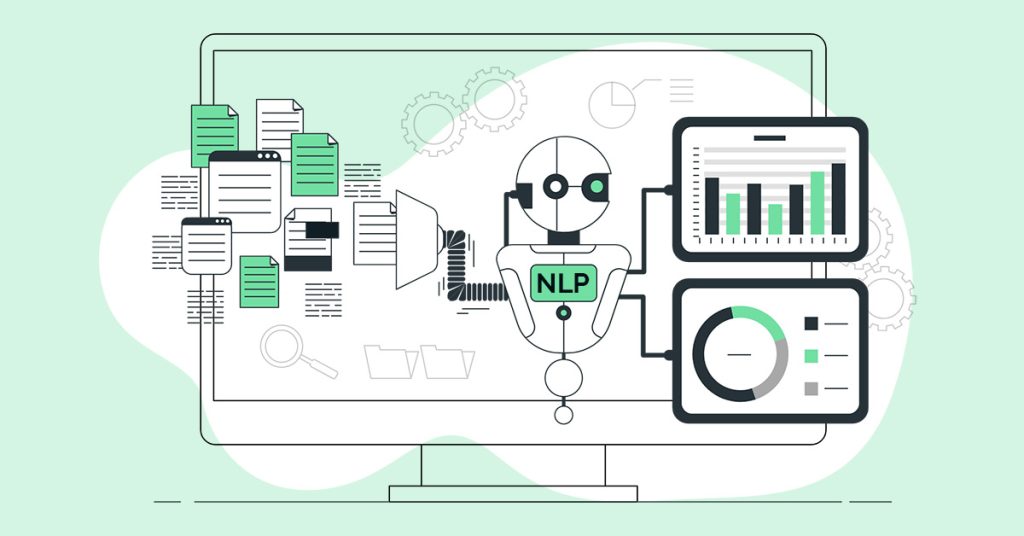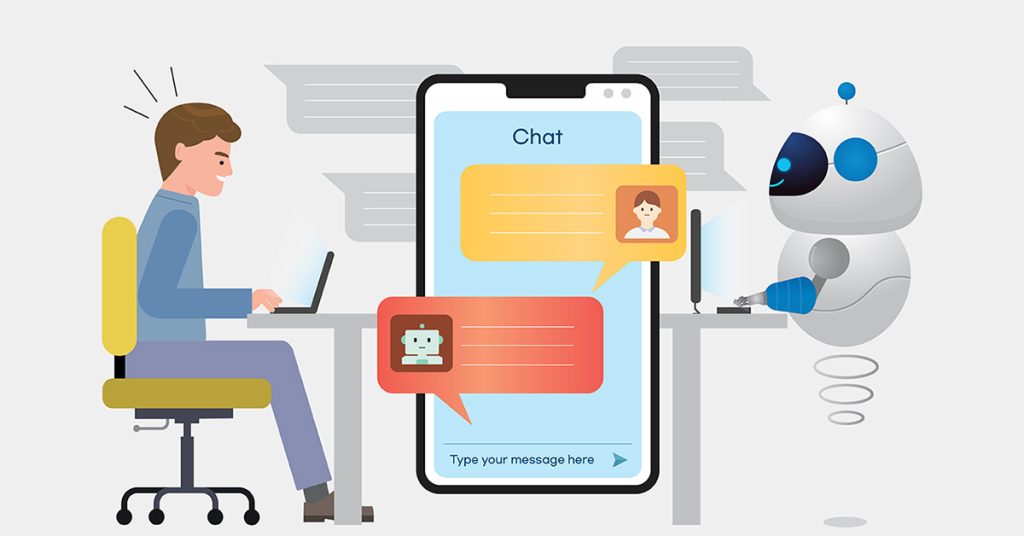- What is customer onboarding?
- Why is a strong customer onboarding process crucial for customer retention and satisfaction?
- Chatbots in customer onboarding : The Advantages.
- Answering FAQ's and providing guidance.
- Tracking progress and providing assistance.
- Integrating human touch when necessary.
- Measuring success : Metrics and Analytics.
- Future trends : Evolving onboarding experiences.
- Improving customer onboarding experience through Botbuz no code chatbot.
What is customer onboarding?
Customer onboarding refers to the process of guiding new customers through the initial stages of their relationship with a product, service, or company. It introduces customers to the features & functionalities of products or services. The goal of customer onboarding is to provide a smooth & positive experience. It gives information to customers regarding how to use the product or service effectively. It ultimately leads to higher satisfaction, engagement & retention rates.
Introduction of chatbot in customer onboarding process: Chatbots are a powerful tool that can automate customer onboarding. It is helpful in providing a more personalized experience for new customers. They can answer questions, provide support & help customers get up & running quickly.
Importance of customer onboarding:
A good customer onboarding process will help new customers,
- Understand your product or service.
- Get up and run quickly.
- Feel confident using your product or service.
- Become advocates for your brand.
Why is a strong customer onboarding process crucial for customer retention and satisfaction?
It helps customers to get started quickly : A good onboarding process will provide customers with all the information. It helps them to get started with product or service. This help to avoid frustration & confusion. Thus, it will make them more likely to stick around.
It builds confidence : A good onboarding process helps new customers feel confident using product or service. This helps them to more likely to use it on their own, without having to rely on support team.
It creates a positive impression : A good onboarding process creates a positive impression of company and it’s product or service. This will make customers more likely to recommend your product or service to others, and it will make them more likely to do business with you again in the future.
It helps you collect valuable data : A good onboarding process can help you collect valuable data about your customers. This data can improve your product or service, to target your marketing campaigns. Thus, making better decisions about your business.
If you want to improve customer retention & satisfaction, you need to make sure you have a strong customer onboarding process in place.
Chatbots in Customer Onboarding: The Advantages
Chatbots can be a valuable tool for customer onboarding. They can provide a personalized & efficient experience for new customers. Here are some of the unique benefits that chatbots bring to the customer onboarding journey:
Personalization : Chatbots can be personalized to each individual customer, based on their interests, needs & questions. This can help customers feel more welcome & engaged. It can also help them get the information they need more quickly. For example, a chatbot for a travel website could ask a customer about their travel preferences, such as their destination, budget & travel dates. The chatbot could then provide the customer with personalized recommendations for flights, hotels & activities.
Efficiency : Chatbots can answer customer questions 24/7. It helps to free up human customer service agents to focus on more complex issues. This can help businesses improve customer satisfaction & reduce wait times. For example, a chatbot for an e-commerce company could answer customer questions about products, shipping & returns. This would allow human customer service agents to focus on helping customers with more complex issues, such as refunds & exchanges.
Scalability : Chatbots meet the needs of any business, regardless of size. This is because chatbots can be hosted in the cloud and can be accessed by customers from anywhere in the world. For example, a chatbot for a financial services company can be used to onboard new customers in multiple countries.
Cost-effectiveness : Chatbots can be a cost-effective way to provide customer onboarding. They can replace the need for human customer service agents. This is especially beneficial for businesses with a large number of customers. For example, a chatbot for a telecommunications company can onboard new customers & answer their questions about plans, pricing & features. This would allow the company to save money on human customer service agents.
Collecting Information Seamlessly : Chatbots can collect information from customers without friction.
Following are few ways that chatbots can collect information from customers :
Use natural language processing : Chatbots can use natural language processing to understand the intent of customer questions. This allows chatbots to ask follow-up questions & gather more information without having to be prompted by the customer. For example, a chatbot for a travel company could ask a customer “What type of vacation are you looking for?” It then use NLP to understand the customer’s response. The chatbot could then ask follow-up questions about the customer’s budget, travel dates & interests.
Use templates : Chatbots can use templates to collect information from customers in a structured way. This can be helpful for businesses that need to collect specific information from customers, such as their contact information, shipping address, or credit card number. For example, a chatbot for an e-commerce company can use a template to collect customer shipping information. The chatbot would ask the customer for their name, address & phone number. The chatbot could then use this information to ship the customer’s order.
Use gamification : Chatbots can use gamification to make information collection fun and engaging for customers. For example, a chatbot for a fitness company could gamify the process of collecting customer health information. The chatbot could give the customer points for answering questions about their diet & exercise habits. The chatbot could then use these points to track the customer’s progress & motivate them to stay on track.
Conversational prompts : Chatbots can use conversational prompts to ask customers questions about themselves & their needs. These prompts provide specific information that the chatbot needs to collect. For example, a chatbot for a financial services company might ask customers about their income, expenses & financial goals.
Smart routing : Chatbots using smart routing to direct customers to the right information or person. It depends on their needs. This helps to ensure that customers get the information they need quickly and easily through chatbots. For example, a chatbot for a customer support company directs customers with technical questions to a human customer service agent. While customers having billing questions is directed to a knowledge base article.
By using these techniques, chatbots can collect information from customers without friction. This can help businesses to improve the customer onboarding experience & collect the information they need to provide better service to their customers.
Answering FAQs and Providing Guidance:
Providing a list of frequently asked questions (FAQs): Chatbots can provide a list of frequently asked questions (FAQs) to customers. This can help customers to find the information they need quickly and easily. For example, a chatbot for a software company might provide a list of FAQs about the company’s products & services.
Answering questions in real time: Chatbots can answer questions in real time. It is helpful for customers who have questions that they need answered immediately. For example, a chatbot for a customer support company might be able to answer questions about billing, shipping & returns.
Providing guidance: Chatbots can provide guidance to customers. This can include things like walking customers through the onboarding process, helping them to set up their accounts & providing them with tips on how to use the product or service. For example, a chatbot for a financial services company might be able to help customers to open a new account, transfer funds & pay bills.
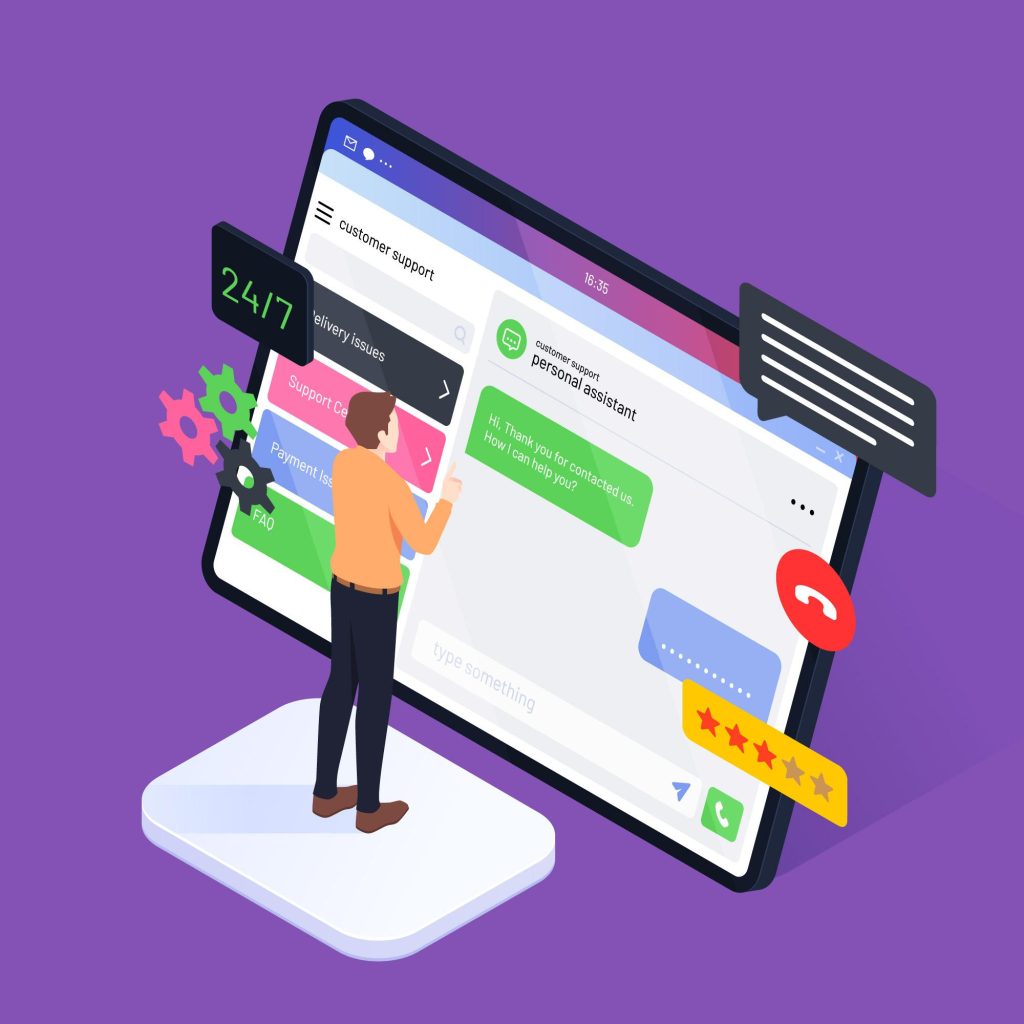
By using these techniques, chatbots can answer FAQs & provide guidance to customers. This can help to improve the customer onboarding experience & to reduce the number of customer support tickets.
Tracking Progress and Offering Assistance:
Chatbots can track customer progress through the onboarding process:
Chatbots can track customer progress through the onboarding process. This is done by tracking the customer’s interactions with the chatbot, such as the questions they ask and the tasks they complete. This information can be used to identify any areas where the customer is struggling and to offer assistance. For example, a chatbot for a software company might track the customer’s progress through the onboarding process by tracking the number of features they have activated and the number of tickets they have submitted. This information can identify customers who are struggling to get started & to offer them more support.
Chatbots can offer assistance to customers who are struggling: Chatbots can offer assistance to customers who are struggling. This can be done by providing answers to questions, walking customers through tasks, or even escalating the issue to a human customer service agent. For example, a chatbot for a financial services company might offer help to customers who are struggling to open a new account by providing answers to questions about the account opening process or by walking them through the process step-by-step.
Chatbots can provide personalized recommendations: Chatbots can provide personalized recommendations to customers based on their progress through the onboarding process & their interactions with the chatbot. This can help customers to get the most out of the product or service and to achieve their goals. For example, a chatbot for a retail company might recommend products to customers based on their browsing history & the items they have added to their cart.
By using these techniques, chatbots can track progress & offer help in the customer onboarding journey. This can help to ensure that customers have a smooth and positive experience.
Integrating Human Touch When Necessary:
Identify when to escalate: Chatbots can be used to handle a wide range of customer interactions, but there will be times when it is necessary to escalate the issue to a human customer service agent. This could be because the customer is asking a question that the chatbot cannot answer, or because the customer needs more personalized assistance. It is important to have a clear process for identifying when to escalate an issue, and to make sure that customers are aware of this process.
Provide context: When a chatbot is unable to handle an issue, it is important to provide the customer with context so that they can be transferred to a human customer service agent who can help them. This context could include the customer’s conversation history with the chatbot, as well as any relevant information that the chatbot has gathered. By providing context, customers can be transferred to a human customer service agent who is already familiar with their issue and who can provide them with the best possible assistance.
Make the transition smooth: When transitioning from chatbot interactions to human interactions, it is important to make the transition as smooth as possible. This could involve things like providing the customer with a brief explanation of why they are being transferred, or offering to stay on the line while the customer is transferred. By making the transition smooth, customers can feel confident that they are still being taken care of, even if they are being transferred to a human customer service agent.
By following these tips, businesses can ensure that they are seamlessly transitioning from chatbot interactions to human interactions. This can help to improve the customer onboarding experience and to ensure that customers are always getting the best possible assistance.
Measuring Success: Metrics and Analytics
There are many key performance indicators (KPIs) that can evaluate the effectiveness of chatbot-assisted onboarding. Some of the most important KPIs include:
Customer satisfaction: Customer satisfaction is a key metric for any onboarding process. It is especially important for chatbot-assisted onboarding. This is because customers who are satisfied with their chatbot experience are more likely to be successful with the product or service. Customer satisfaction can be measured using surveys, polls, and feedback forms.
Time to value: Time to value is the amount of time it takes for a customer to start seeing value from the product or service. This is an important metric for chatbot-assisted onboarding because it measures the effectiveness of the chatbot in helping customers get started quickly. Time to value is tracking the time it takes customers to complete key onboarding tasks, such as setting up their account or making their first purchase.
Customer retention: Customer retention is the percentage of customers who continue to use the product or service after a certain period of time. This is an important metric for any business. But it is especially important for businesses that use chatbots for onboarding. This is because chatbots can help to reduce customer churn by providing a positive & helpful onboarding experience. Customer retention helps to track the number of customers who cancel their subscriptions or stop using the product or service.
Cost per acquisition (CPA): CPA is the amount of money it costs to acquire a new customer. This is an important metric for businesses that use chatbots for onboarding. It is because chatbots can help to reduce CPA by making it easier and cheaper to onboard new customers. CPA can track the total cost of acquiring new customers and dividing it by the number of new customers acquired.
Customer engagement: Customer engagement is the degree to which customers interact with the product or service. This is an important metric for chatbot-assisted onboarding. It measures the effectiveness of the chatbot in keeping customers engaged. Customer engagement means tracking the number of times customers use the chatbot, the amount of time they spend interacting with the chatbot & the number of questions they ask the chatbot.
By tracking these KPIs, businesses can get a clear picture of the effectiveness of their chatbot-assisted in customer onboarding process. This information can improve the chatbot and to ensure that it is meeting the needs of customers.
Future Trends: Evolving Onboarding Experiences:
Chatbot technology is evolving. It is likely to continue to shape the future of customer onboarding in many ways. Following are the future trends that we can expect to see :
Chatbots will become more personalized : Chatbots are already being used to personalize customer onboarding experiences. But this trend is likely to continue in the future. Chatbots will be able to learn more about individual customers & their preferences. They will be able to use this information to provide more personalized onboarding experiences. For example, a chatbot could use a customer’s browsing history to recommend products or services that they might be interested in.
Chatbots will become more conversational : Chatbots are already becoming more conversational. This trend is going to be continued in the future. Chatbots will be able to hold natural conversations with customers. They will be able to understand and respond to customer queries in a more human-like way. This will make chatbots more engaging and more effective for customer onboarding process.
Chatbots will become more integrated with other systems : Chatbots are already being integrated with other systems, such as CRM systems & knowledge bases. This trend will be continued in the future. Chatbots become more sophisticated as they are used for more complex tasks. For example, a chatbot could be integrated with a CRM system to track customer interactions & to provide personalized recommendations.
Chatbots will become more accessible : Chatbots are already becoming more accessible, and this trend is likely to continue in the future. Chatbots will be able to be accessed on a wider range of devices, such as smartphones, tablets & wearable devices. This will make chatbots more convenient for customers to use. This will make them more accessible to a wider range of people.
Overall, chatbot technology is rapidly evolving. It is likely to continue to shape the future of customer onboarding in a number of ways. Chatbots are becoming more personalized, conversational, integrated, and accessible. This will make them more engaging and more effective for onboarding customers. As chatbot technology continues to evolve, it is likely to play an even more important role in the customer onboarding process in the years to come.
Improve your customer onboarding experience through Botbuz no code chatbot:
Botbuz is a chatbot platform that allows you to create chatbots without any coding experience. This means that you can quickly & easily create a chatbot that is tailored to your specific needs.
Botbuz chatbots are also very powerful. They can perform a variety of tasks, such as:
Answering FAQs: Botbuz chatbots can answer FAQs about your product or service. This helps to reduce the number of support tickets that you receive.
Providing support: Botbuz chatbots can provide support to your customers. This can include things like troubleshooting problems and answering questions.
Personalizing the experience: Botbuz chatbots can learn about your customers and their preferences. This allows them to provide a more personalized experience.
Promoting your product or service: Botbuz chatbots can promote your product or service. This can be done by answering questions, providing information, and even making recommendations.
If you are looking for a way to revolutionize your customer onboarding journey, then you should consider using Botbuz no code chatbots. Botbuz is a omni-channel chatbot builder that can help you to improve the customer experience, increase customer satisfaction & boost customer retention.
